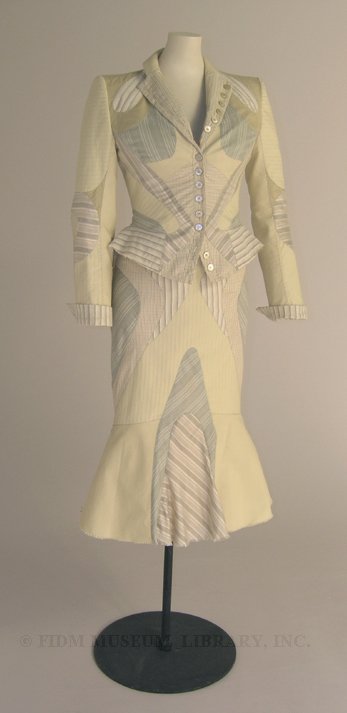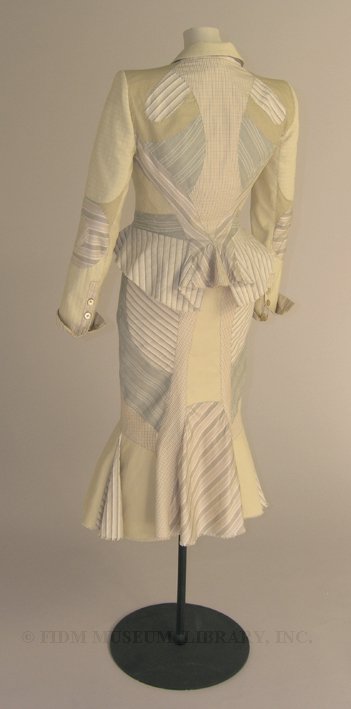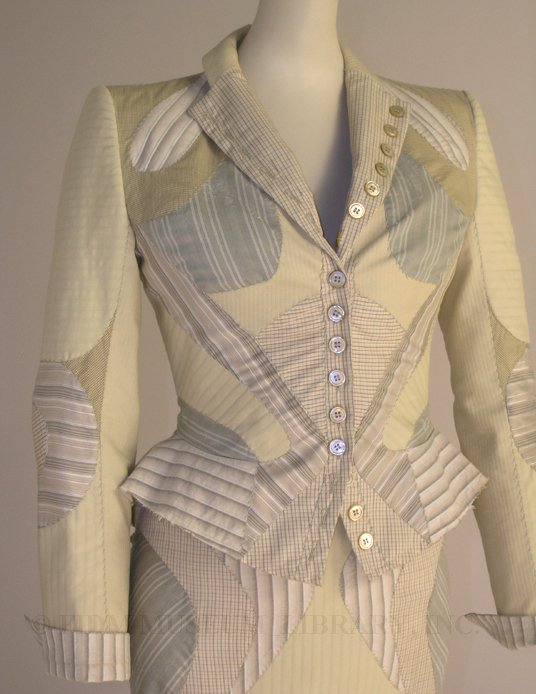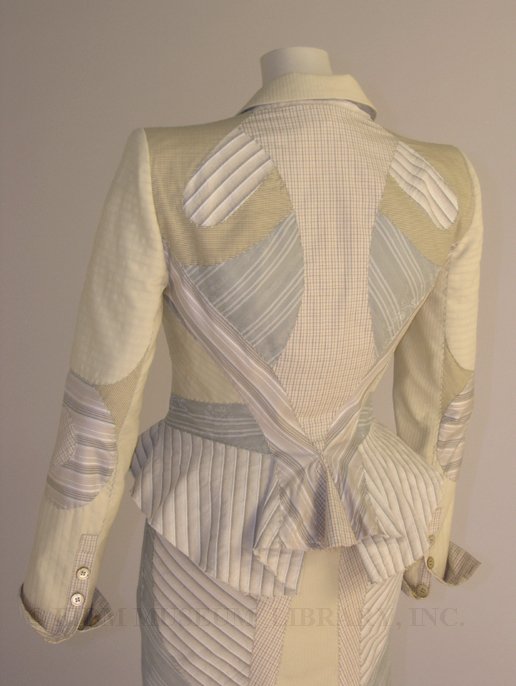Alexander McQueen
Deliverance, Alexander McQueen's Spring/Summer 2004 fashion show was the hit of the season. Based on the 1969 film, They Shoot Horses, Don't They? (starring Jane Fonda), Deliverance subverted the typical fashion show narrative by reversing the order of presentation; evening gowns kicked off the extravaganza while faux-homespun daywear and a tarnished evening gown concluded the show. This narrative mirrored the film, which documents a Depression-era dance marathon. In order to earn a cash prize the hopeful participants must dance for days with only brief breaks for food and short naps. Lack of sleep and food, paired with non-stop dancing, drives the dancers to the point of emotional and physical collapse and ends in tragedy. You can watch the trailer here. McQueen's S/S 2004 fashion show was a mini-dance marathon featuring 20 trained dancers paired with 20 models, all of whom rehearsed for two weeks. Deliverance began with models and dancers moving about the dance floor with a sense of eagerness and purpose, dressed in delicate gowns. By the end of the show, the dancer/models struggle to stay upright while dressed in patchwork garments representative of their overall decline. Of course, Deliverance was a fashion show presented by Alexander McQueen, so even the patchwork garments were exquisitely crafted. The woman's suit constructed of men's cotton shirting seen below appears near the end of the Deliverance, worn by a model slumped on the shoulders of her dancing partner.You can watch Deliverance (without sound) here. The emotional and physical deterioration in Deliverance is typical of McQueen's work, which frequently explores themes related to violence and decay. Garments, particularly in his early collections, are often intentionally cut and torn and his fashion shows have been called a "theatrical staging of cruelty."1 Though it almost seems counterintuitive, McQueen has expressed a strong interest in creating a feminine persona that is intimidating in its visual power. When examined closely, it is easy to view the FIDM Museum suit as an expression of McQueen's interest in powerful femininity. The symmetrical patchwork resembles the patterning of an animal or insect and the small flounce at the lower back of the jacket references the stinger of a bee. Despite these obvious danger signals, the subtle and varied patterning of the textiles invites closer inspection, enticing the spectator as a spider lures an insect to its web.

Two-piece suit Alexander McQueen Spring/Summer 2004 Museum Purchase 2005.5.4AB
1 Evans, Caroline. Fashion at the Edge. New Haven: Yale University Press, 2003. Bellafante, Ginia. "At This Dance, McQueen's the Last Man Standing."/span> New York Times 13 Oct. 2003: B10.


